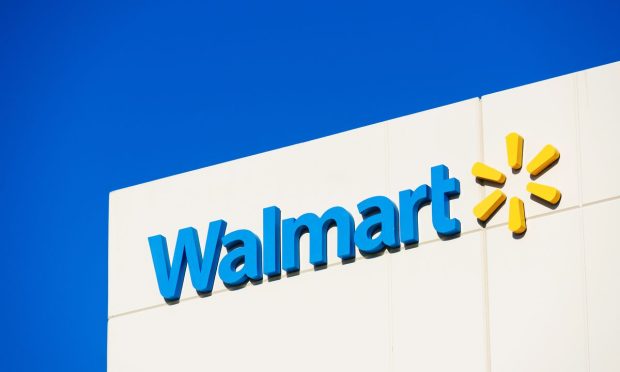Walmart Adds Workers, Touts In-Stock Affordable Items for Holiday Shopping

Walmart said its omnichannel approach and investments in technology in recent years have set the retailer up to meet shoppers’ needs this holiday season, with approximately 50,000 new supply chain employees added in the third quarter to keep things moving in the coming weeks.
Doug McMillon, president and CEO of Walmart Inc., said gains the retailer has seen in grocery and strong back-to-school sales results indicate that customers are continuing to move away from early pandemic behaviors, providing tailwinds for the retailer.
“A strong consumer, a degree of inflation and government stimulus are all factors, but I also like what I see in the core of the business,” McMillon said on a conference call with analysts.
Walmart’s inventory increased by 11.5% in the third quarter, which executives said indicates the retailer’s readiness for a strong holiday season. On a two-year stack, inventory is up by about 17%.
Chief Financial Officer Brett Biggs told analysts Walmart has also “significantly increased” the number of items available for expedited delivery, and the retailer’s fulfillment services penetration continues to grow. In August, the company also launched Walmart GoLocal, a white-label delivery-as-a-service program for competitors, which executives touted as evidence of the retailer’s capabilities.
See also: Walmart GoLocal Signs Home Depot as First Retail Client
McMillon said Walmart has also invested heavily in technology and automation for its distribution centers and delivery services, using machine learning and artificial intelligence to use stores as fulfillment hubs, create smart substitutions for online orders and unlock other efficiencies.
“The business model’s changing, the digital transformation is underway,” McMillon said. “This is a different company than it was, and we’ve got a lot of runway in front of us.”
To be sure, Walmart is not immune from the labor shortage and supply chain bottlenecks causing headaches for other retailers. But Biggs said Walmart has been proactive about mitigating transit delays, including adding extra lead time to orders, chartering vessels specifically for Walmart goods, rerouting deliveries to less congested ports, and expanding overnight hours at “key U.S. ports.”
Related: Growing Concerns About Inflation, Supply Chains Garner ‘All Hands on Deck’ Response
In the third quarter, Walmart added about 200,000 people to its workforce, about 25% of whom are in supply chain jobs and 75% of whom are in stores or other locations in order to meet demand.
Fighting Inflation
Officially, Walmart had $140.5 billion in revenue in the third quarter, up 4.3% year-over-year. Digital sales grew 8% in the quarter compared to last year and 87% on a two-year stack. McMillon attributed the eCommerce growth in large part to Walmart’s “omnichannel focus.” Grocery sales are up 10%, Biggs said, and grew $3.6 billion during the quarter, the strongest quarterly growth in six quarters.
Looking ahead to the fourth quarter, executives said they expect sales to grow by 5% year-over-year; for the full fiscal year, Walmart raised its guidance to 6% growth.
To be sure, some of this growth is attributable to inflation in the U.S., which hit 6.2% in October, the highest level since November 1990. But McMillon and Biggs both said Walmart is committed to fighting inflation as much as possible and keeping prices low, something that founder Sam Walton also valued.
“We haven’t seen this kind of inflation in the U.S. for quite some time,” McMillon said. “But we have operated in markets where we’ve seen this basically forever and even more extreme. So that experience is helpful.”
Battle of the Titans
Last month, retail rival Amazon said it expects to incur several billion dollars of additional costs ahead of the holidays in order to manage labor supply shortages, global supply chain issues, and increased freight and shipping costs. In the third quarter, labor costs and inflation added approximately $2 billion to Amazon’s operating costs, particularly in August and September; those costs will likely be close to $4 billion in the three months ending Dec. 31.
Read more: Amazon Warns of Billions in Additional Costs to Meet Holiday Demand
PYMNTS proprietary data show that Walmart has just over a 9% share of consumers’ retail spending, placing it in a dead heat with Amazon after years of the eCommerce giant gaining on the box store king. Both companies see just over 3% of total consumer spending.

With 87% of consumers set to do at least some of their holiday shopping online this year, though — 13% more than last year — Walmart may be at a slight disadvantage behind Amazon, which has nearly 50% of the eCommerce market. Walmart said, though, that it added about 21 million items to its digital marketplace in the third quarter, and Biggs noted that the retailer’s omnichannel model provides “substantial competitive advantage as shopping behaviors continue to evolve.”
“Customers want choices in how they shop, and our unique set of assets with a network of stores, expanding digital capabilities, robust distribution networks and innovative services very effectively serve their evolving needs,” he said.
According to location analytics company Placer.ai, Walmart saw foot traffic surge in October, with visits up over 5% compared to 2019 — better than the Arkansas-based retailer has seen all year. And with a 19% share of the food and beverage market, Walmart may be able to create a “one-stop-shop” experience for consumers who come for the cranberry sauce and stay for the toys and apparel.
“So many families depend on us for food, apparel, home items, TVs and seasonal items like toys and Christmas trees,” McMillon said. “They trust us to have what they’re looking for and at the right price, and while this year has its challenges, we’re in a position to serve them.”
